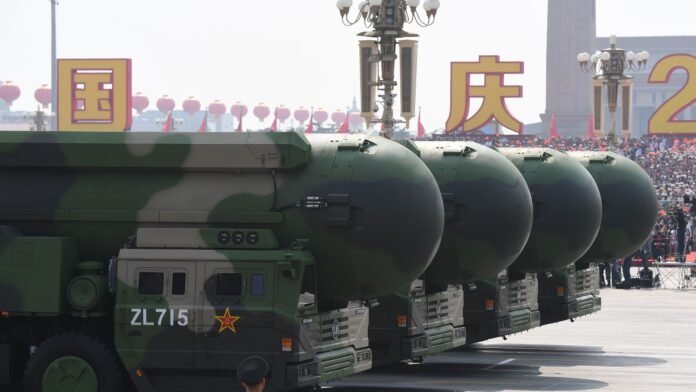
With cruise missiles and nuclear-tipped intercontinental ballistic missiles that can reach any part of the globe, including Washington, D.C., 11,138 kilometres from Beijing, China has one of the most lethal missile arsenals in the world.
According to the Pentagon, China launched over 135 ballistic missiles in 2021 for training and testing purposes, surpassing the total number launched by the rest of the globe. For the first time, a country is challenging the U.S. in the nuclear arms race.
The U.S. Department of Defense (DoD) thinks Beijing has more than 400 operable weapons in its arsenal. According to estimates, the PLA Rocket Force (PLARF) will have about 1,500 by 2035. This is extremely disturbing as China has never explained the reason for expanding its nuclear forces.
Currently, China is surpassing U.S. in terms of hypersonic glide vehicles. These weapons are difficult to intercept as they reach their targets. Their ability to manoeuvre boosts the chances that they can defeat enemy air defences, and their ability to manipulate boosts the chances of defeating enemy air defences.
Despite being extremely lethal, hypersonic glide vehicles also had several disadvantages. These weapons need specially developed materials that can handle high temperatures—the high cost of such equipment limits production.
China launched its first ICBM into orbit using a hypersonic glider on July 27, 2021. This was the world’s longest test of a ground attack weapon, covering more than 40,000 kilometres in just over 100 minutes. The Pentagon claims it doesn’t hit the target, although it was a close call.
China is increasing the number of conventional, dual-capable, and nuclear missiles in its arsenal without any weapon controls. Russia and the U.S. have limited their capabilities through treaties like the Intermediate-Range Nuclear Forces (INF) Treaty, but China has steadily built up a sizable arsenal of dangerous missiles.
China also declared that it would not participate in any arms control agreement with the USA and Russia. A strategic breakout can be used to explain how China’s nuclear arsenal has recently grown significantly. Dangerously, it might lead to China adopting an even more forceful atomic policy.